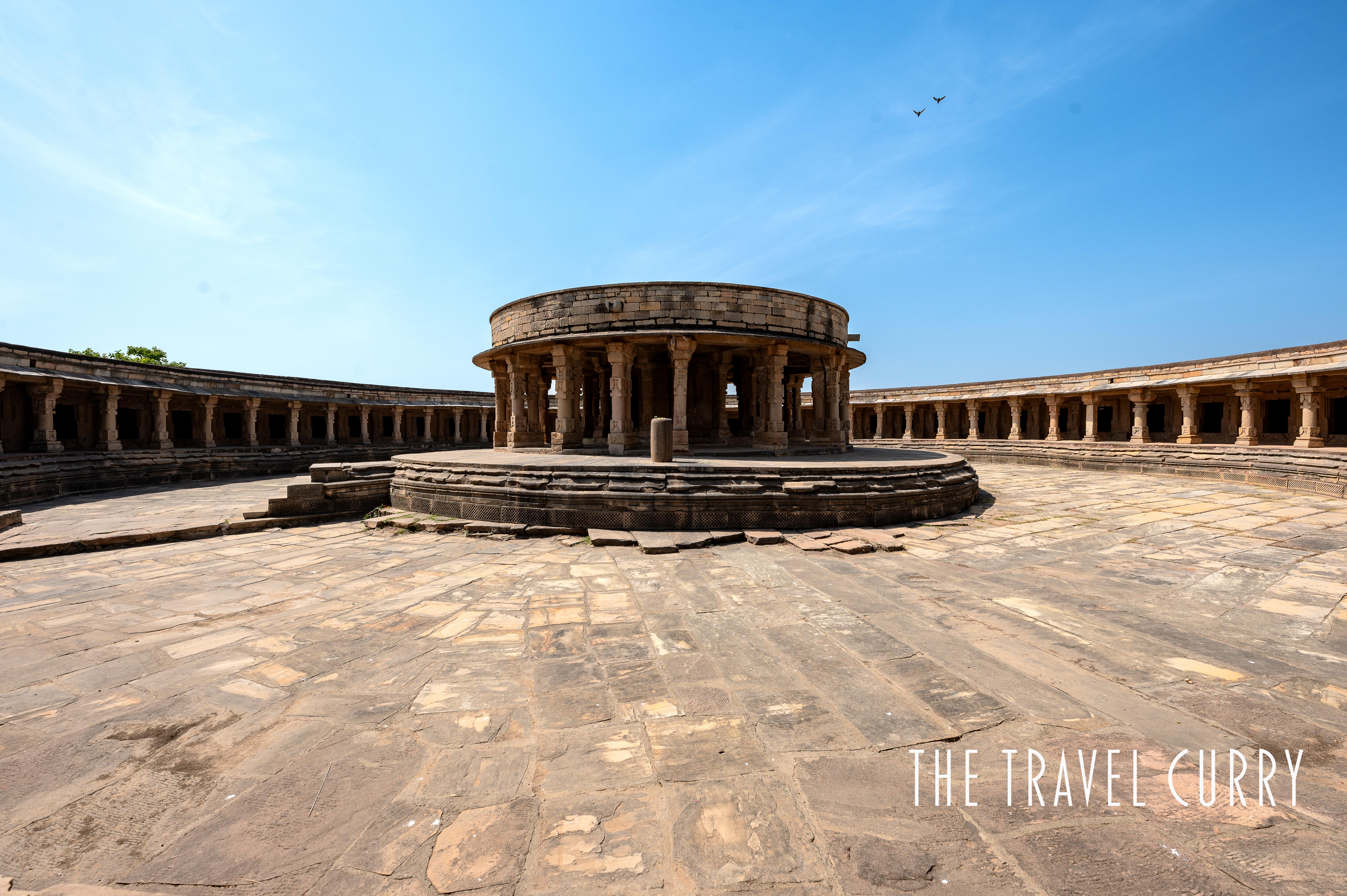
Nestled in the heart of Madhya Pradesh, the Chausath Yogini Temple in Mitaoli or Mitawali stands as a testament to ancient architectural marvels and mystical energies. Shrouded in mystery, this temple has drawn curious travelers and history enthusiasts for centuries. Let’s unveil the mysteries of this ancient temple, shall we?
Stepping back in time

Also known as Ekttarso Mahadev Temple, Chausath Yogini stands as one of the four major surviving yogini temples in India. The Kachchhapaghata dynasty, which reigned over central India from the 10th to 12th century, most likely constructed the temple in the 11th century. It is dedicated to the powerful and mystical female deities known as Yoginis. Essentially, they are associated with Lord Shiva’s worship. In addition, it is believed that the temple was a center for studying astrology and mathematics based on the movement of the Sun.

What’s unique about Chausath Yogini Temple
Locally called Mitawali or Mitaoli, the temple stands atop a 100 feet high hillock with 100 steps to reach its entrance. The temple gets its name from the 64 chambers inside the premises. Additionally an extra chamber dedicated to Devi, makes the chamber count 65. Unlike other Indian temples, this is open to sky, to ease the communion of Yoginis as they were capable of flight.
A number of historians point out that Mitaoli temple was the inspiration for the Indian Parliament Building. The circular shape and architectural similarity in both have often sparked a debate though there is no concrete evidence to prove the same.
Presence of Shiva Lingas

While the primary focus of the temple is on the yoginis, the presence of Shiva Lingas further adds a layer of spiritual significance. The lingas are strategically placed around the central courtyard, creating an ambiance that resonates with divine energy. There is also a large lingam, mysteriously placed outside the central chamber. The coexistence of the yoginis and Shiva Lingas symbolizes the harmonious balance between feminine and masculine energies.

Survival through Earthquakes

One of the most astonishing aspects of the Chausath Yogini Temple is its resilience against seismic forces. Despite being in a region prone to earthquakes, this ancient structure has withstood the test of time. Various theories explain its remarkable survival, ranging from the architectural design to the choice of materials. Some scholars propose that the circular layout of the temple contributes to its stability during earthquakes. Furthermore, the absence of tall structures and the open-air design allow for flexibility, preventing stress-accumulation that could lead to collapse. Additionally, the craftsmanship and use of locally sourced stones might have played a crucial role in enhancing the temple’s durability.

Another theory suggests that the sacred geometry and alignment of the temple with cosmic energies provide a protective shield. The ancient architects, well-versed in the principles of Vastu Shastra, may have intentionally incorporated these elements to safeguard the structure from natural calamities.
How to Reach Mitawali
For those eager to experience the mystical allure of the Ekttasro Mahadev Temple, planning the visit requires a bit of attention. The temple is open to visitors from sunrise to sunset. It’s advisable to check with local authorities for any specific timing changes or religious ceremonies that might temporarily restrict access. Not far from Mitaoli, lies another set of mysterious ancient temple ruins with interesting history and architecture. You can club your visit to Mitaoli with the Bateshwar and Padavali group of temples on the same day.
Reaching Mitaoli is an adventure in itself. Chausath Yogini temple is approximately 40 kilometers from the city of Gwalior. You can hire a private vehicle to navigate the scenic roads. Local transport is barely available in this circle. The journey offers glimpses of rural Madhya Pradesh, dotted with lush landscapes and quaint villages. Those on a trip to Orchha, Gwalior, or Khajuraho, consider a short detour to Mitaoli which lies on the way.
Entry fee- None. Photography is allowed and is not charged.

Best Time to visit Mitaoli
Undoubtedly, winter is the best time to visit this arid region of Madhya Pradesh. It gets unbearably hot during summer. Hence October to March is the most recommended time for Mitaoli. As far as the time of the day is concerned, morning time is advisable. Also, please avoid visiting the isolated place after sunset, as it is far from the habitat.

The last word
As you stand within the ancient walls of Chausath Yogini Temple, you can’t help but marvel at the blend of history, spirituality, and architectural brilliance. The mystical Mitaoli invites travelers to step back in time and explore the enigmatic world of yoginis and Shiva Lingas. The survival of this temple through earthquakes remains a captivating puzzle, weaving together the threads of ancient wisdom and craftsmanship. Also, not to forget the temple’s similarity to the old Parliament house. So, if you’re a seeker of hidden offbeat treasures and spiritual wonders, set your course for Mitaoli where the secrets of the Chausath Yogini Temple await your discovery.

One thought on “The Mysterious Chausath Yogini Temple in Mitaoli”
Comments are closed.